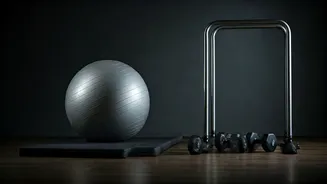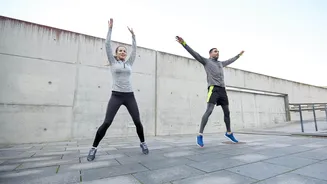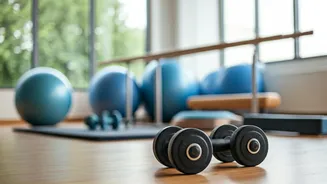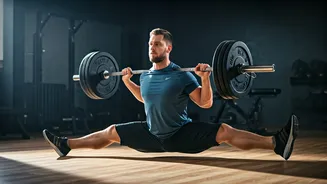Warm-Up Stretching
Before diving into any exercise routine, it's essential to prepare your body with gentle stretching. This helps to increase blood flow to the muscles,
reducing stiffness and preparing them for movement. Begin with neck stretches, slowly tilting your head to each side and then forward and backward. Next, perform shoulder rolls, both forward and backward, to loosen the muscles. Arm circles, both small and large, can further enhance flexibility. Incorporate wrist rotations and finger stretches to improve range of motion in the upper extremities. Complete the warm-up with ankle rotations and toe raises to address lower body stiffness. Each stretch should be held for about 15-30 seconds, always remembering to breathe deeply and avoiding any sudden movements or discomfort. Warming up sets the stage for a safer and more effective exercise session, laying the foundation for better movement throughout the day.
Seated Marches
Seated marching is a beneficial exercise that focuses on leg movement and core engagement while seated. Sit upright in a chair with your feet flat on the floor. Engage your core muscles to maintain good posture. Lift one knee towards your chest, as if you're marching, while keeping your back straight. Lower the leg and repeat with the other leg. Alternate between legs, maintaining a steady pace and focusing on controlled movements. As you progress, try increasing the height of the knee lift to intensify the workout. The exercise improves lower body strength, coordination, and helps maintain mobility. Aim for at least 10-15 repetitions per leg, several times a day. If it feels comfortable, you can gently tap your opposite hand to the raised knee for added coordination practice. Regular practice of seated marching can greatly enhance leg strength and everyday movement, ensuring better quality of life.
Chair Stands
Chair stands are a functional exercise that directly addresses mobility issues experienced by many with Parkinson's. Begin by sitting in a sturdy chair with your feet flat on the floor and slightly apart. Place your hands on your thighs or across your chest for support. Lean forward slightly, shifting your weight towards your feet, while maintaining a straight back. Push through your legs to stand up, engaging your core and gluteal muscles. Stand tall for a moment before slowly lowering yourself back down to the chair, maintaining control throughout the movement. Focus on controlled movements, avoiding the use of momentum to stand or sit. Aim for multiple sets of 5-10 repetitions, ensuring that you maintain good posture and a steady pace. This exercise strengthens leg muscles, improves balance, and enhances the ability to transition between sitting and standing, a crucial everyday task. Consistent practice builds strength and confidence, making daily activities easier and more manageable.
Arm Raises
Arm raises, whether done seated or standing, are excellent for improving upper body strength and range of motion. Begin by sitting or standing with your feet flat on the floor and shoulder-width apart. Hold your arms at your sides, with your palms facing inward. Slowly raise your arms to the sides, up to shoulder height, keeping your elbows slightly bent. Hold this position for a few seconds, then slowly lower your arms back down to your sides. For added challenge, you can use light weights, like water bottles, or canned goods. Focus on controlled movements and avoid locking your elbows. You can also vary the exercise by raising your arms overhead. Perform 10-15 repetitions, several times throughout the day, ensuring you do not strain your muscles. This exercise combats stiffness in the arms and shoulders, strengthening muscles and facilitating everyday tasks such as reaching and lifting. Regular arm raises can considerably enhance your upper body strength, making daily movements easier and more comfortable.
Balance Practice
Balance exercises are vital for preventing falls, a common concern for people with Parkinson's. Start with simple exercises. Standing with your feet shoulder-width apart, shift your weight from side to side, then from front to back, to improve weight distribution. Next, try standing on one leg, holding onto a chair or wall for support if needed. Gradually increase the duration you can hold the position. Practice walking in a straight line, focusing on heel-to-toe steps and maintaining a steady pace. You can introduce gentle head turns while walking. Another activity is the use of a balance board if available. These exercises should be done in a safe environment, preferably near a stable surface. Regular practice will boost stability, improve coordination, and reduce the risk of falls. Aim to perform these exercises daily, gradually increasing the difficulty as your balance improves. Such exercises ensure safer and more confident movement in everyday settings.














